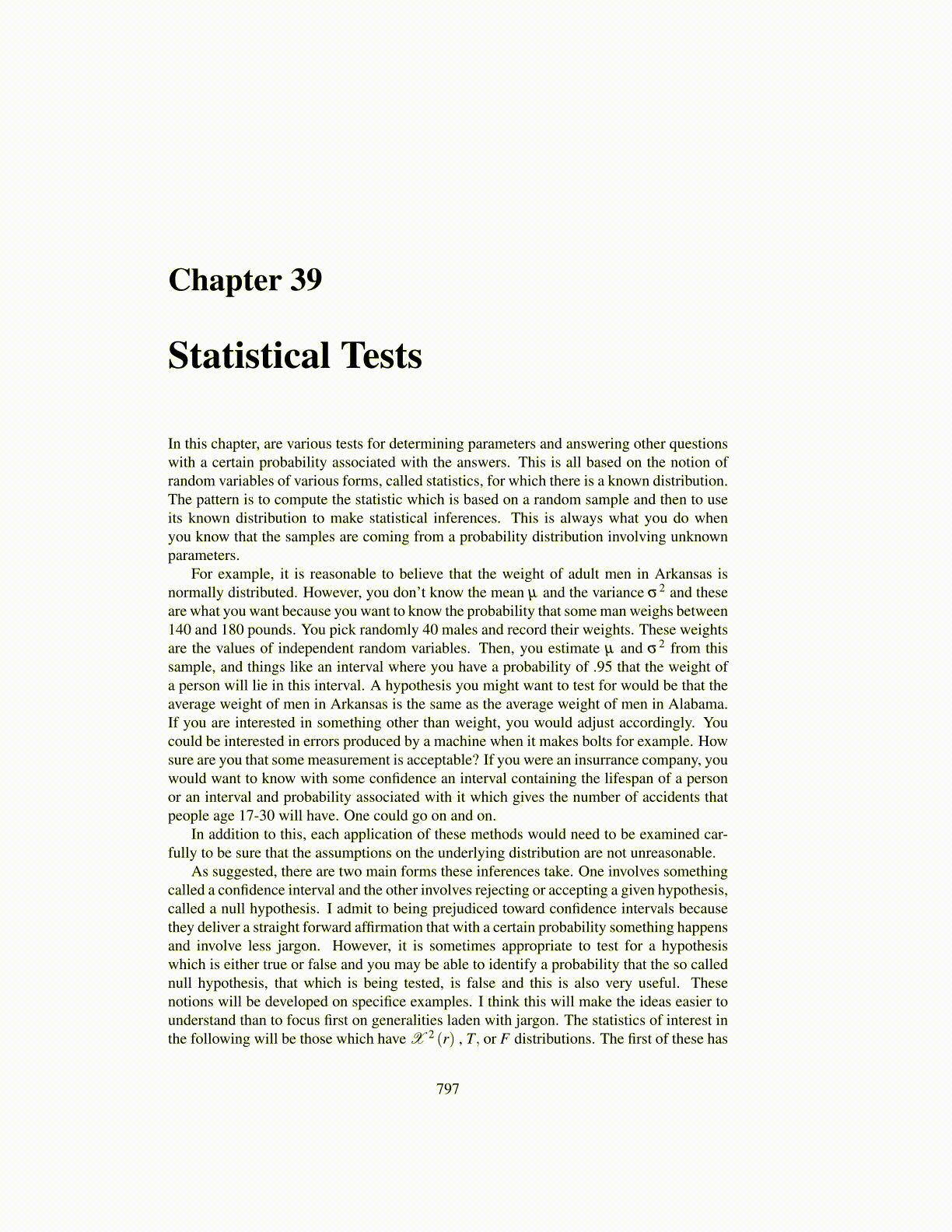
Chapter 39
Statistical Tests
In this chapter, are various tests for determining parameters and answering other questionswith a certain probability associated with the answers. This is all based on the notion ofrandom variables of various forms, called statistics, for which there is a known distribution.The pattern is to compute the statistic which is based on a random sample and then to useits known distribution to make statistical inferences. This is always what you do whenyou know that the samples are coming from a probability distribution involving unknownparameters.
For example, it is reasonable to believe that the weight of adult men in Arkansas isnormally distributed. However, you don’t know the mean µ and the variance σ2 and theseare what you want because you want to know the probability that some man weighs between140 and 180 pounds. You pick randomly 40 males and record their weights. These weightsare the values of independent random variables. Then, you estimate µ and σ2 from thissample, and things like an interval where you have a probability of .95 that the weight ofa person will lie in this interval. A hypothesis you might want to test for would be that theaverage weight of men in Arkansas is the same as the average weight of men in Alabama.If you are interested in something other than weight, you would adjust accordingly. Youcould be interested in errors produced by a machine when it makes bolts for example. Howsure are you that some measurement is acceptable? If you were an insurrance company, youwould want to know with some confidence an interval containing the lifespan of a personor an interval and probability associated with it which gives the number of accidents thatpeople age 17-30 will have. One could go on and on.
In addition to this, each application of these methods would need to be examined car-fully to be sure that the assumptions on the underlying distribution are not unreasonable.
As suggested, there are two main forms these inferences take. One involves somethingcalled a confidence interval and the other involves rejecting or accepting a given hypothesis,called a null hypothesis. I admit to being prejudiced toward confidence intervals becausethey deliver a straight forward affirmation that with a certain probability something happensand involve less jargon. However, it is sometimes appropriate to test for a hypothesiswhich is either true or false and you may be able to identify a probability that the so callednull hypothesis, that which is being tested, is false and this is also very useful. Thesenotions will be developed on specifice examples. I think this will make the ideas easier tounderstand than to focus first on generalities laden with jargon. The statistics of interest inthe following will be those which have X 2 (r) , T, or F distributions. The first of these has
797